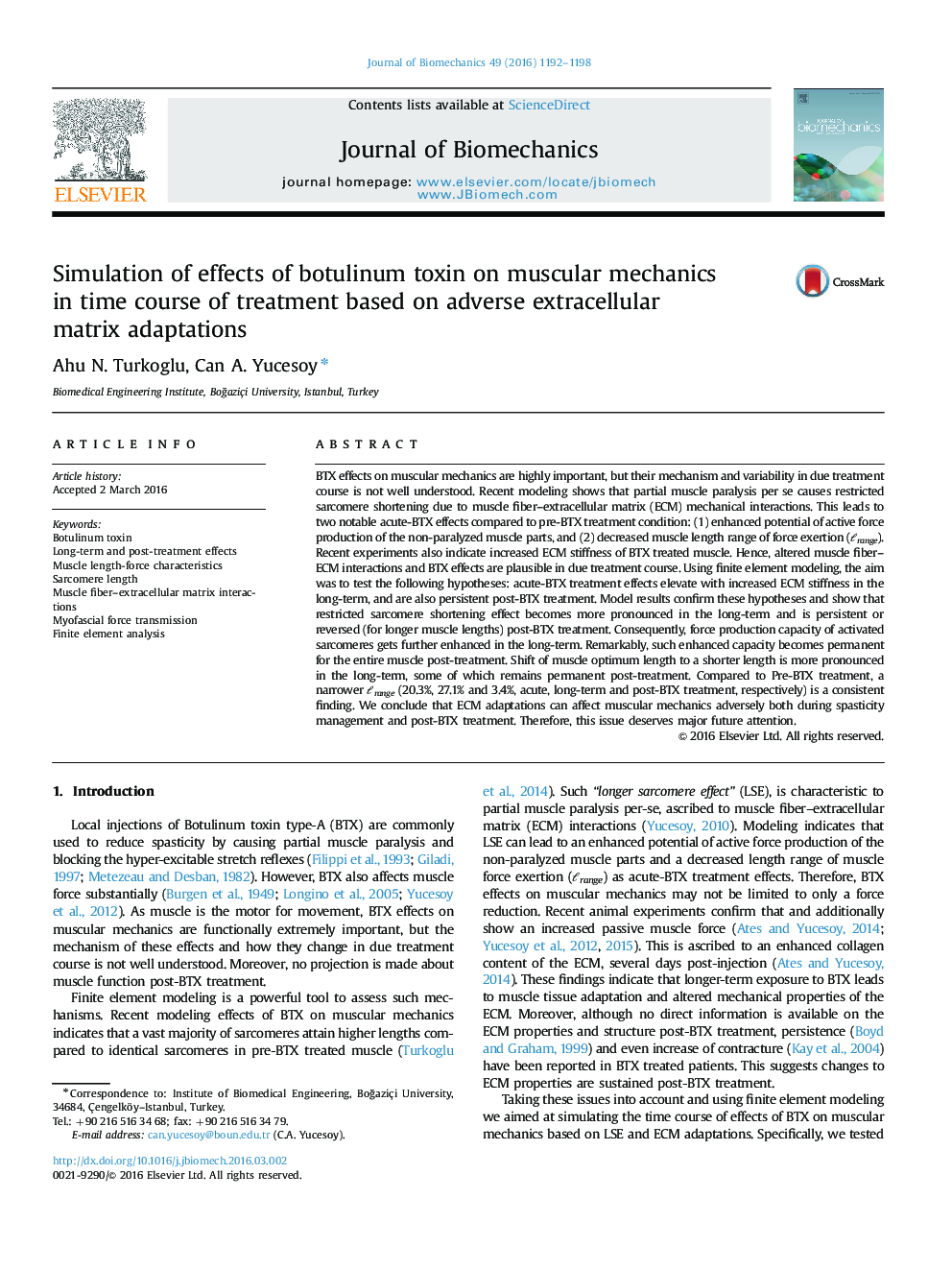| Article ID | Journal | Published Year | Pages | File Type |
|---|---|---|---|---|
| 871839 | Journal of Biomechanics | 2016 | 7 Pages |
BTX effects on muscular mechanics are highly important, but their mechanism and variability in due treatment course is not well understood. Recent modeling shows that partial muscle paralysis per se causes restricted sarcomere shortening due to muscle fiber–extracellular matrix (ECM) mechanical interactions. This leads to two notable acute-BTX effects compared to pre-BTX treatment condition: (1) enhanced potential of active force production of the non-paralyzed muscle parts, and (2) decreased muscle length range of force exertion (ℓℓrange). Recent experiments also indicate increased ECM stiffness of BTX treated muscle. Hence, altered muscle fiber–ECM interactions and BTX effects are plausible in due treatment course. Using finite element modeling, the aim was to test the following hypotheses: acute-BTX treatment effects elevate with increased ECM stiffness in the long-term, and are also persistent post-BTX treatment. Model results confirm these hypotheses and show that restricted sarcomere shortening effect becomes more pronounced in the long-term and is persistent or reversed (for longer muscle lengths) post-BTX treatment. Consequently, force production capacity of activated sarcomeres gets further enhanced in the long-term. Remarkably, such enhanced capacity becomes permanent for the entire muscle post-treatment. Shift of muscle optimum length to a shorter length is more pronounced in the long-term, some of which remains permanent post-treatment. Compared to Pre-BTX treatment, a narrower ℓℓrange (20.3%, 27.1% and 3.4%, acute, long-term and post-BTX treatment, respectively) is a consistent finding. We conclude that ECM adaptations can affect muscular mechanics adversely both during spasticity management and post-BTX treatment. Therefore, this issue deserves major future attention.
